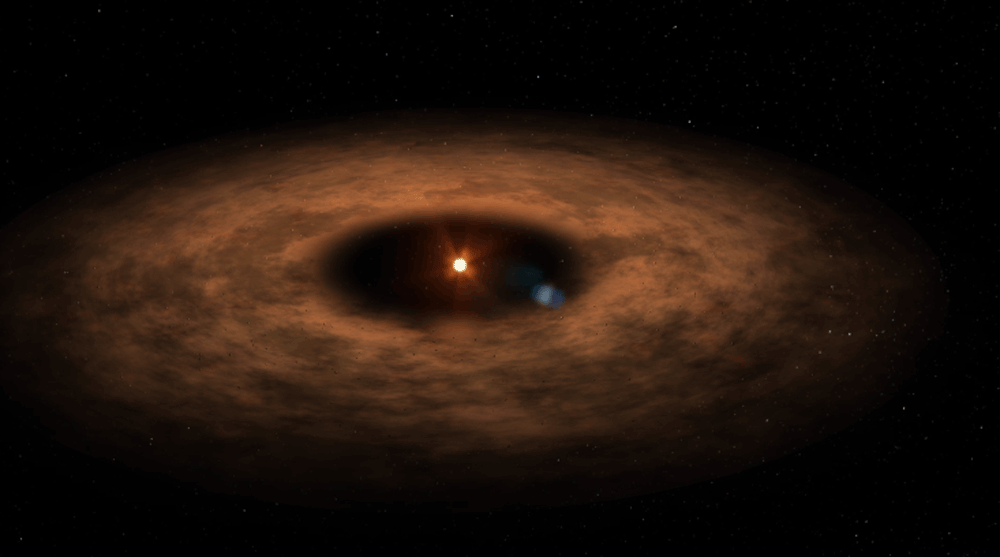Scientists discover a world orbiting a unique young star
UCAR scientist contributes to NASA-led research
Jun 25, 2020 - by Staff
Jun 25, 2020 - by Staff

Illustration depicting the AU Mic system. (NASA's Goddard Space Flight Center/Chris Smith, USRA.)
For more than a decade, astronomers have searched for planets orbiting AU Microscopii, a nearby star still surrounded by a disk of debris left over from its formation. Now scientists using data from NASA’s Transiting Exoplanet Survey Satellite (TESS) and retired Spitzer Space Telescope are reporting the discovery of a planet about as large as Neptune that circles the young star in just over a week.
The system, known as AU Mic for short, provides a one-of-a-kind laboratory for studying how planets and their atmospheres form, evolve, and interact with their stars.
“AU Mic is a young, nearby M dwarf star. It’s surrounded by a vast debris disk in which moving clumps of dust have been tracked, and now, thanks to TESS and Spitzer, it has a planet with a direct size measurement,” said Bryson Cale, a doctoral student at George Mason University. “There is no other known system that checks all of these important boxes.”
The new planet, AU Mic b, is described in a paper co-authored by Cale and led by his advisor Peter Plavchan, an assistant professor of physics and astronomy at George Mason. Their report was published yesterday in the journal Nature.
“We’ve been looking for a planet around AU Mic for a long time, but the search has been complicated by how active the star is," said Carolyn Brinkworth, the chief diversity, equity & inclusion officer of the University Corporation for Atmospheric Research (UCAR) and an astrophysicist who was a co-author of the new study. "In the end it took observations from five different observatories to discover and characterize this planet. It’s a testament to the power and importance of combining the unique capabilities of many different facilities.”
For more, see the NASA article.